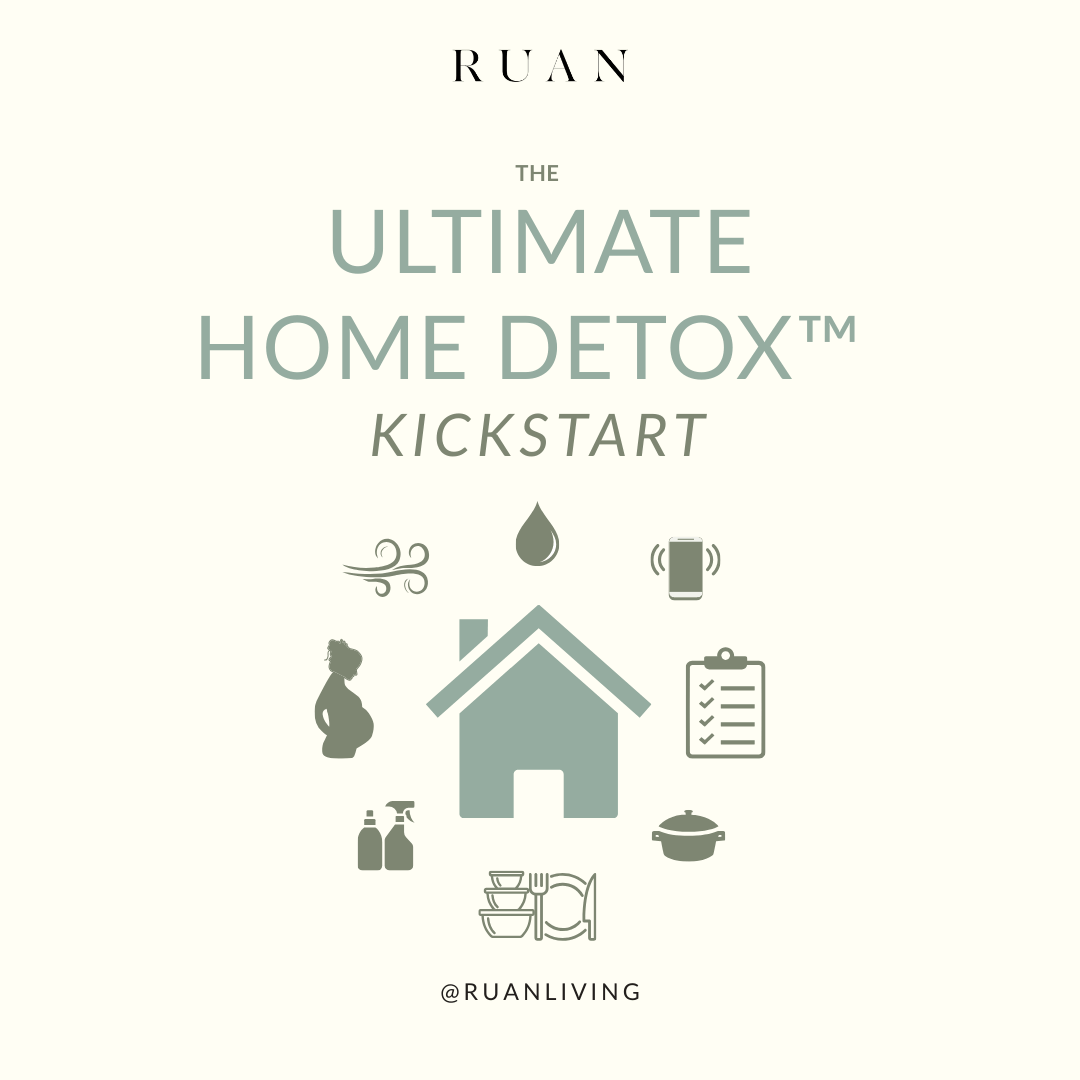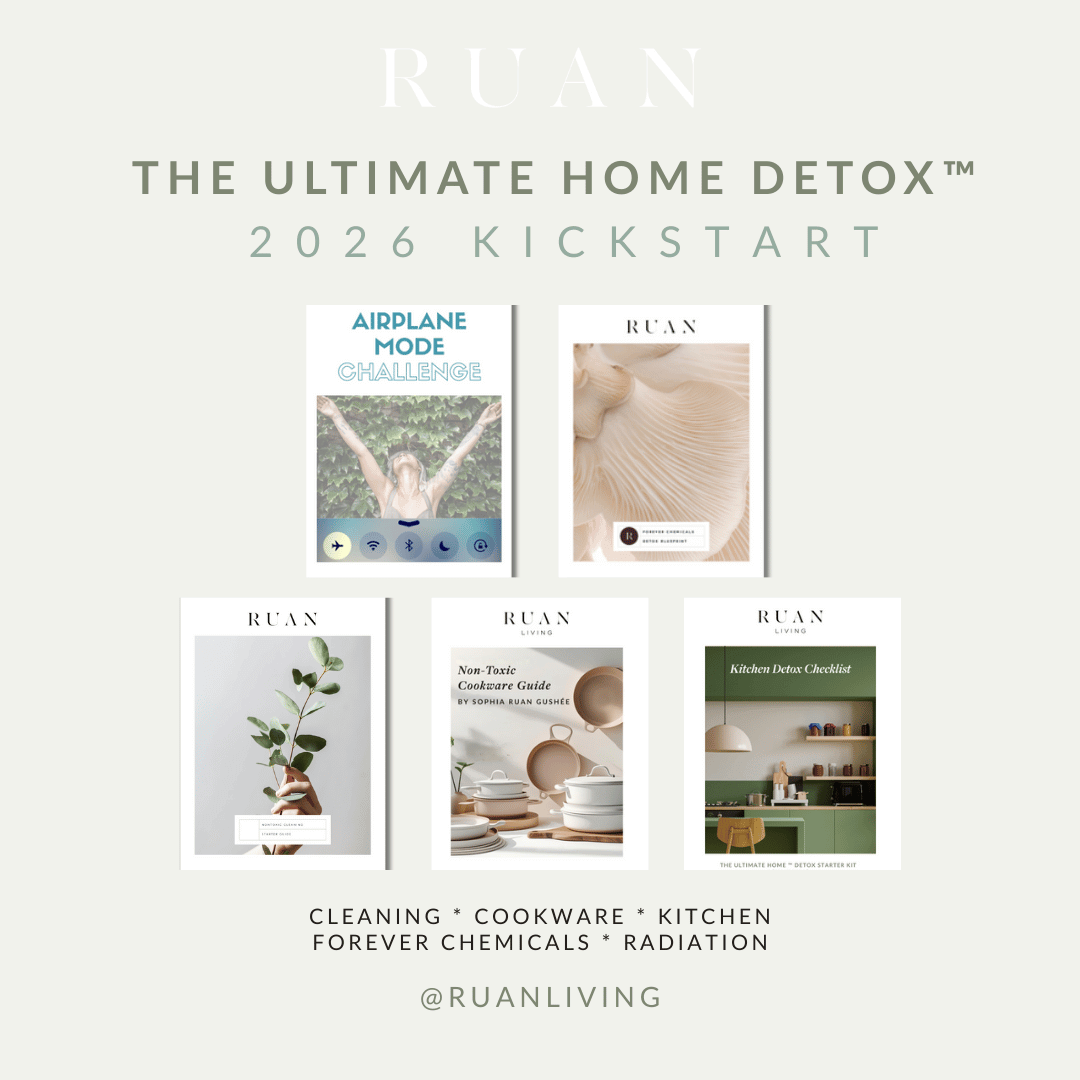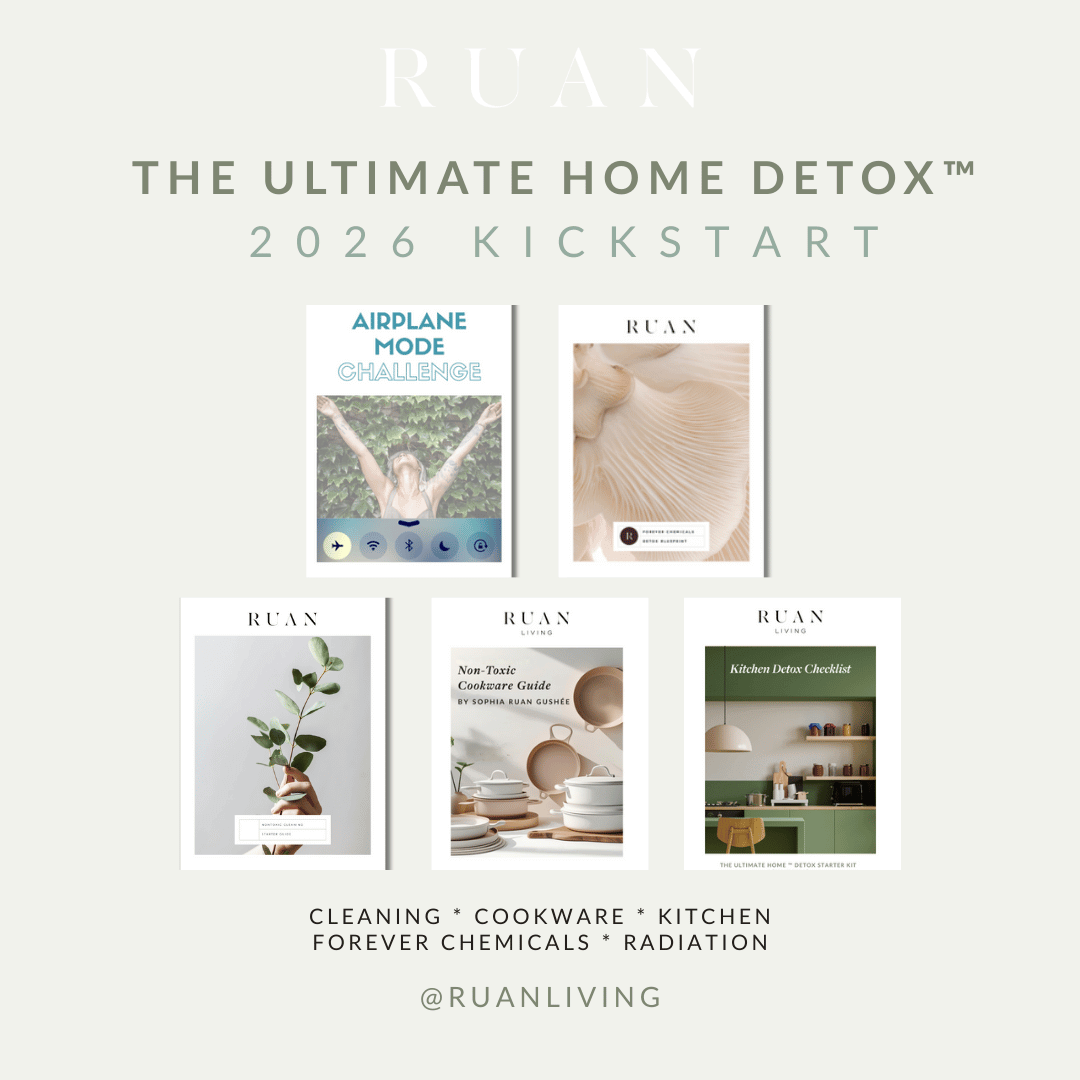
7 Simple Ways to Reduce Microplastic Exposure—Starting with Your Water
Jul 03, 2025Microplastics and nanoplastics have now been detected throughout the human body—from placenta, semen, and ovaries to breast milk, the brain, and umbilical vein blood. With the help of emerging technologies, researchers are learning just how far these invisible particles can travel—and what that might mean for our health.
Episode 108 is a Practical Nontoxic Living™ Raindrop. These simple—brief and raw—episodes are drops of practical wisdom from Sophia's life. They are part of the occasional Thursday Ultimate Home Detox™ Unpacked series. Learn more at the Ruan Living blog and the Practical Nontoxic Living podcast episode 90: Introducing Raindrops of Practical Nontoxic Living™.
Microplastics Found in the Human Brain and Body
Recent studies have discovered a spoon’s worth of plastic in human brains. Individuals with dementia were found to have three to five times more microplastics in their brains than those without dementia. That’s just one of many startling findings about how plastic pollution in the human body may be connected to health outcomes we care deeply about.
Microplastics have now been detected in:
-
Human placenta
-
Breast milk
-
Blood
-
Liver and kidneys
-
Ovaries and sperm
-
Brain tissue
These findings raise new concerns about how daily exposure to microplastics may affect not only our current health but also long-term outcomes like fertility, neurological function, and hormone balance.
Health Risks Linked to Microplastic Exposure
Early research—mostly from animal and lab studies—suggests that microplastic and nanoplastic exposure may contribute to a range of health risks, including:
-
Chronic inflammation
-
Oxidative stress
-
Immune system dysfunction
-
Hormone disruption
-
Cancer risk
-
Abnormal organ development
-
Metabolic disturbances
These particles may affect nearly every major system in the body, including the nervous, reproductive, endocrine, gastrointestinal, respiratory, cardiovascular, renal, and immune systems.
How to Reduce Microplastic Exposure: 7 Simple Tips
You don’t need to overhaul your life overnight to reduce microplastic exposure. Just start with one powerful change—and build from there.
1. Switch from Bottled Water to Filtered Tap Water
Switch from drinking bottled water to filtered tap water. Scientists estimate this can cut your microplastic exposure by up to 90% from 90,000 to 4,000 each year. In addition to hearing more in Practical Nontoxic Living podcast episode 108, you can learn about water filtration in Practical Nontoxic Living podcast episode 48 "Detox Your Home's Water and Sleep Areas" (link below).
2. Avoid Microwaving Food in Plastic
Heating plastic containers in the microwave can release millions of microplastics and billions of nanoplastics within just 3 minutes. Plastic containers in one study released as many as 4.22 million microplastic and 2.11 billion nanoplastic particles from only one square centimeter of plastic area, according to the PubMed article "Assessing the Release of Microplastics and Nanoplastics from Plastic Containers and Reusable Food Pouches: Implications for Human Health".
3. Skip Plastic Teabags
A single plastic teabag steeped at 95°C can release up to 11.6 billion microplastics and 3.1 billion nanoplastics into your tea, according to the PubMed article "Plastic Teabags Release Billions of Microparticles and Nanoparticles into Tea." Choose loose-leaf or organic cotton mesh bags instead.
4. Store Food in Glass, Not Plastic
Reduce plastic contact by switching to glass food storage containers. Explore our guide: "Choosing the Best Glass Containers for Non-Toxic Living: A Comprehensive Guide" for more.
5. Limit Canned Foods
One study showed a 1,000% spike in BPA levels in people who ate canned soup daily for five days, according to peer-reviewed journal Genomics Press article "Human microplastic removal: what does the evidence tell us?" BPA is a known endocrine disruptor often used in can linings and on paper used for printing like cash register receipts, copy paper, airline tickets, and movie tickets.
6. Avoid Highly Processed Foods
Processed foods tend to have more microplastics and nanoplastics. For example, chicken nuggets contain up to 30x more microplastics per gram than chicken breast, according to PubMed article "Exposure of U.S. adults to microplastics from commonly-consumed proteins"
7. Choose Consciously Sourced and Manufactured Alcohol & Seafood
Both alcohol and seafood are major sources of dietary microplastics. I personally subscribe to Dry Farm Wines because they test for microplastics, added sugars, mold, and chemicals.
For seafood, I seek out suppliers that lab-test for toxicants—which I share more about in the D-Tox Academy.
Want to Learn More About Microplastics in the Brain?
Check out Practical Nontoxic Living episode 79: "50% More Microplastics in Human Brains: How to Protect Yourself."
Practical Guidance for Your Nontoxic Life
The presence of plastic in our bodies may feel overwhelming—but knowledge is power. Small steps, like filtering your tap water and choosing glass over plastic, can have an outsized impact on your toxic load.
✨ Want help figuring out where to start? Explore my personal journey, vetted products, and tools inside the D-Tox Academy.
More Content On Water Filtration & How To Avoid Microplastics
-
Learn more about water filtration in Practical Nontoxic Living podcast episode 48 "Detox Your Home's Water and Sleep Areas
-
Explore Sophia’s personal filter journey inside the D-Tox Academy
- Article "Microplastics in plastic bottled water versus tap water"



